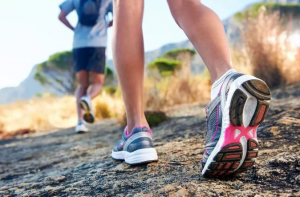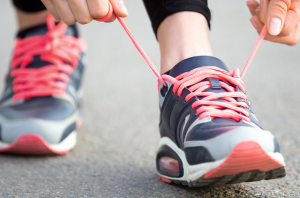Run correctly to reduce knee wear
Running is one of the most convenient sports that is loved by the public. As the saying goes, there is nothing wrong with running and running, healthy and long-lived one hundred years old! However, some people like high-intensity long-distance running and fast running, so that the knee is easily overburdened and injured. Today I will tell you how to run without hurting your knees.
The knee bears more weight during exercise
The knee joint is one of the most moving and weight-bearing joints in the human body. The knee joint bears all the weight from the human body, and even extra weight. Studies have shown that when the two legs stand at the same time without flexion, the knee joints bear half of the bodyweight above the knee, about 43% of the bodyweight; when standing on one leg, they bear about 2 times the body weight; when walking on the ground, the load carried by the knee joint can reach the body weight 2 to 3 times the weight; when walking fast on flat ground, it can increase to 4.3 times the weight; when going up and down the stairs, it is 4.4 times and 4.9 times; when running, the weight is about 4 times; when playing ball, it is about 6 times; squatting and It can be increased to about 8 times when kneeling. The position and structure of the knee joint make it bear greater impact and pressure than other joints, and it is a joint that is prone to sports injuries.

Running properly does not hurt your knees
In fact, running is very good, but many people want to be anxious and often exceed their own limits. Slowly increase speed and mileage when running. In general, exercise must be done according to one’s ability.
As long as the running posture is reasonable, the amount of exercise is not too large, and there is no underlying disease in the knee, running will not hurt the knee, but will increase the strength of the lower extremity muscular system and enhance the bone density and strength of the bones.
How can I run without hurting my knees?
First of all, before running, it is particularly important to choose a pair of running shoes that fit your feet. Secondly, we must choose a flat ground and do a good job of warm-up activities. Maintain a good running posture. A reasonable running posture can effectively reduce the impact of running on the knees. After returning home, you can apply heat to the leg muscles, massage the joints and surrounding soft tissues, and perform relaxation exercises on the knee joints to fully recover the fatigued joints.
To protect the knee joints, one should pay attention to controlling the amount of exercise on the one hand, and rest if you feel knee pain. In addition, it is very important not to rely on protective gear to protect, but to rely on muscles to protect. Exercise more muscle strength, responsiveness, sensitivity, and so on.

In summary, we can find that if you want to avoid any damage to your knees during sports running, you must learn to run correctly
The way to avoid running damage to the knee is to reduce wear and impact and increase the strength of bones and muscles.
1. Control the amount of running
Regarding the incremental amount of running volume, due to the great individual differences of each person, and the base of running volume is also different, it is not very reasonable to use a percentage to control it. Therefore, the feeling every time you run is very important. This feeling is the tiredness of the muscles and body. The more tired the muscles are, the greater the impact force the meniscus bears. When it exceeds its cushioning range, it will damage the femoral head. Many damages to the meniscus and femoral head are irreparable. For novice runners, pay attention to your body and stop immediately when you feel heavy on the ground or feel pressure on your knees.
2. Reduce speed training
In the case of the same amount of running, a higher speed means a greater impact, which may cause more damage to the knee. At the same time, the higher the speed, the running posture will be deformed, to increase the pace and increase the speed. The unconscious leg does not bend when landing, and loses the muscle cushioning ability when bending through the joints, and transmits the impact directly to the knee.
3. Adjust the running posture
A coordinated running posture can significantly alleviate the impact of the ground on the knee joint. When landing first, control the ankle position as far as possible directly below the knee, or slightly behind. The bend at the knee will have an excellent cushioning effect. Second, the location of the foot tribe should be controlled on the forefoot as much as possible, especially the center of gravity should be placed on the forefoot between the big toe and the second toe. This gravitational position is the point where the legs are reasonably arranged. There is also to control the stability of the body, do not shake left and right. Because shaking left and right will make the position of the center of gravity constantly change in the lateral direction, giving the knee a lateral impact.

Of course, many measures can help us prevent knee injuries, such as weight loss, weight loss, and you can run lighter. Do at least 5 minutes of warm-up exercise before and after exercise. Wear a pair of suitable running shoes, check the running shoes in time, and replace them with new shoes if they are severely worn.
